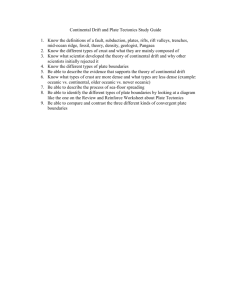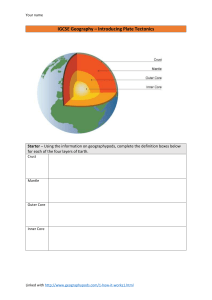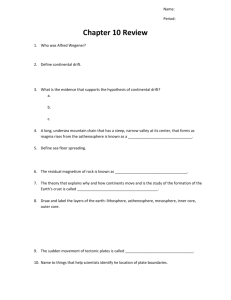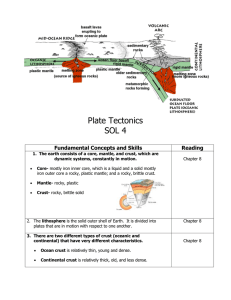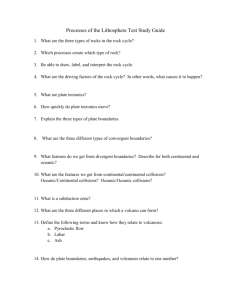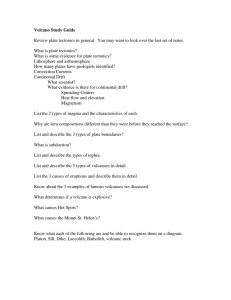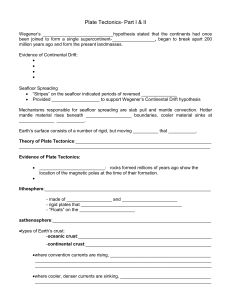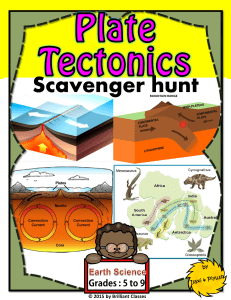Ocean 101 Study Guide for Midterm Exam #1
advertisement
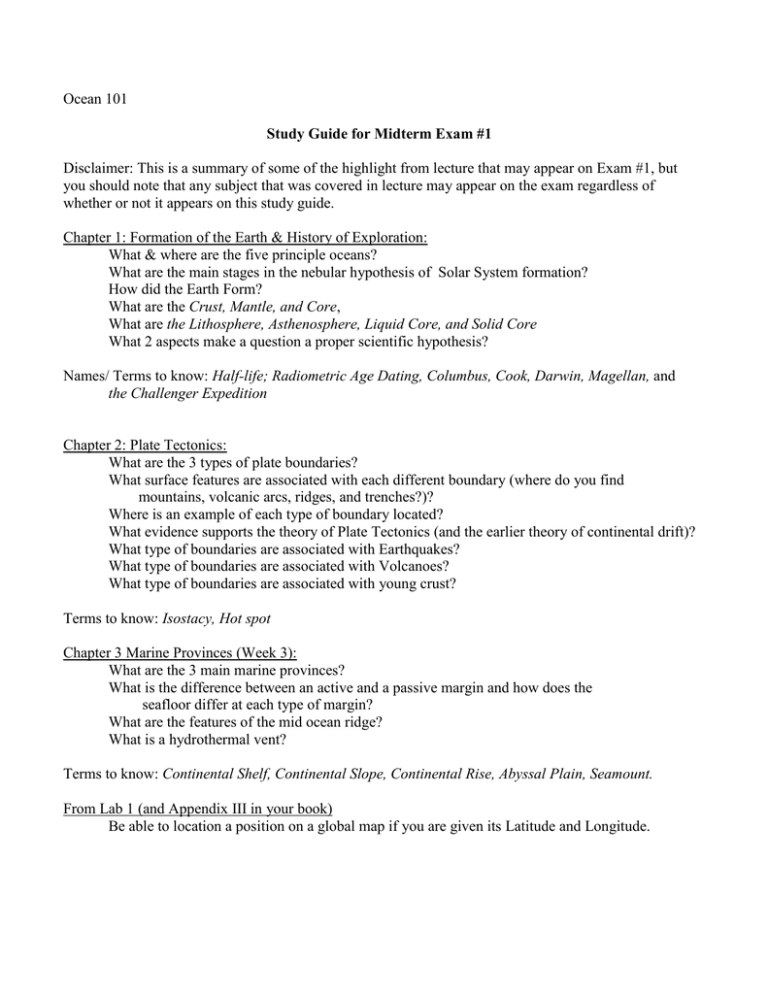
Ocean 101 Study Guide for Midterm Exam #1 Disclaimer: This is a summary of some of the highlight from lecture that may appear on Exam #1, but you should note that any subject that was covered in lecture may appear on the exam regardless of whether or not it appears on this study guide. Chapter 1: Formation of the Earth & History of Exploration: What & where are the five principle oceans? What are the main stages in the nebular hypothesis of Solar System formation? How did the Earth Form? What are the Crust, Mantle, and Core, What are the Lithosphere, Asthenosphere, Liquid Core, and Solid Core What 2 aspects make a question a proper scientific hypothesis? Names/ Terms to know: Half-life; Radiometric Age Dating, Columbus, Cook, Darwin, Magellan, and the Challenger Expedition Chapter 2: Plate Tectonics: What are the 3 types of plate boundaries? What surface features are associated with each different boundary (where do you find mountains, volcanic arcs, ridges, and trenches?)? Where is an example of each type of boundary located? What evidence supports the theory of Plate Tectonics (and the earlier theory of continental drift)? What type of boundaries are associated with Earthquakes? What type of boundaries are associated with Volcanoes? What type of boundaries are associated with young crust? Terms to know: Isostacy, Hot spot Chapter 3 Marine Provinces (Week 3): What are the 3 main marine provinces? What is the difference between an active and a passive margin and how does the seafloor differ at each type of margin? What are the features of the mid ocean ridge? What is a hydrothermal vent? Terms to know: Continental Shelf, Continental Slope, Continental Rise, Abyssal Plain, Seamount. From Lab 1 (and Appendix III in your book) Be able to location a position on a global map if you are given its Latitude and Longitude.
